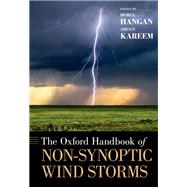- ISBN: 9780190670252 | 0190670258
- Cover: Hardcover
- Copyright: 8/31/2021
In different areas of the world, much of the damage due to wind is caused by non-synoptic, local wind storm events, such as tornadoes and downbursts. In North America the damage due to these winds is more than 65% of total wind damage, and there are no guidelines or code implementations to deal with such catastrophic events. As we enter the third decade of the twenty-first century, current research is in its first phase of addressing these types of events, from their characterization, simulation, and loading, to collapse-mode effects on buildings and structures, as well as socioeconomic implications. The need is clear to better understand non-synoptic local winds; properly simulate them; assess the difference in loading between these events and synoptic large-scale winds that have been part of the wind engineering practice for more than five decades; determine their statistics and associated risks; and apply this through guidelines, codes, risk mitigation, and adaptation responses to socioeconomic impact.
The Oxford Handbook of Non-Synoptic Wind Storms, led by Dr. Horia Hangan and Dr. Ahsan Kareem, features nearly 30 chapters, contributed by an international panel of leading scientists, scholars, and engineers, that address these issues and stimulate thought, research, and responses to non-synoptic wind storm hazards in North America and worldwide. Together, these articles provide clear definitions of the problems to be tackled, offer a strategic framework for forward-looking research, identify the best-suited tools and methodologies to address the problems at hand, and suggest ways to maximize collaborative planning between the disciplines that will tackle these challenges.
The Oxford Handbook of Non-Synoptic Wind Storms, led by Dr. Horia Hangan and Dr. Ahsan Kareem, features nearly 30 chapters, contributed by an international panel of leading scientists, scholars, and engineers, that address these issues and stimulate thought, research, and responses to non-synoptic wind storm hazards in North America and worldwide. Together, these articles provide clear definitions of the problems to be tackled, offer a strategic framework for forward-looking research, identify the best-suited tools and methodologies to address the problems at hand, and suggest ways to maximize collaborative planning between the disciplines that will tackle these challenges.







